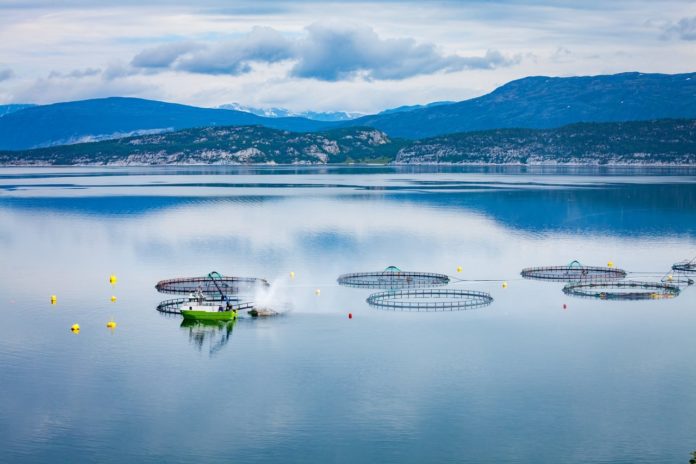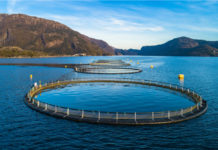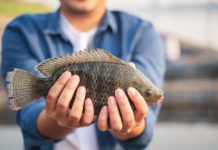- More sustainable fish farms do not use hormones, antibiotics, chemicals or additives
- Responsible water usage means only taking up a small portion of its surface and constantly monitoring water quality
- Farmed fish eat a balanced diet of primarily vegetable-based feed
- Farms reduce waste by finding new uses for parts of the fish that would otherwise be discarded
When you’re in the grocery store picking up some fish fillets for dinner, do you choose wild or farmed fish?
When shopping for fish, many people assume that wild is the way to go. But in times when nearly 90% of wild fish stocks are already overfished or completely depleted, responsible aquaculture is emerging as a viable alternative that can support the global demand for fish and other seafood. So what exactly do you find at a sustainable fish farm?
Healthy Waters

All Natural Animals
Moving our tour into the facilities, the fish you find are healthy, natural animals just like those you’d find in the wild. Top fish farms don’t use any hormones or unnecessary antibiotics on their fish stocks, and they steer clear of any other chemicals or additives. Instead, they keep their animals healthy by raising them carefully with wholesome food and clean water.
Responsibly Sourced Feed
What do farmed fish eat? Raising carnivorous fish like salmon can cause problems since their feed must be raised or caught in the wild. However, fish like Tilapia can be fed on a primarily vegetable-based diet made from sustainable US-grown crops. At a well-managed fish farm, stocks are fed a diet that has a minimal impact on the environment.
Waste Reduction Strategies
In stores, consumers usually buy fish loins or fillets. Those parts only make up about a third of the fish. So what happens to the rest? At a responsible fish farm, these materials are not discarded, but repurposed in innovative ways:
- Fish scales can be used in the manufacturing process of collagen for cosmetics
- Fish skin can help make gelatin for pharmaceuticals, or even be used by the fashion industry as an alternative to leather
- Remaining fish oil and solids make a healthy addition to animal feed, or can be turned into biodiesel fuel
- The rest of the fish (including innards, frames and trimmings) can be converted into a nutrient-rich compost
Participation in the Community
For the final stop on our tour of a sustainable fish farm, let’s look outside the farm itself and consider the community it’s a part of. Many fish farms are in remote, rural areas of countries like Mexico, Honduras or Indonesia, but the companies that operate them are headquartered elsewhere. Sensitivity to the local communities is critical for thoughtful and well-managed aquaculture operations.
The percentage of fish produced through aquaculture has risen sharply, from just 7% in the 1970s to over 50% today. And as the industry has grown, farming practices have improved in many areas, including sustainability. It has become a feasible way to provide a hungry world with healthy protein.
Related reading:






